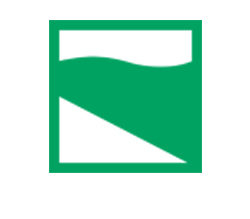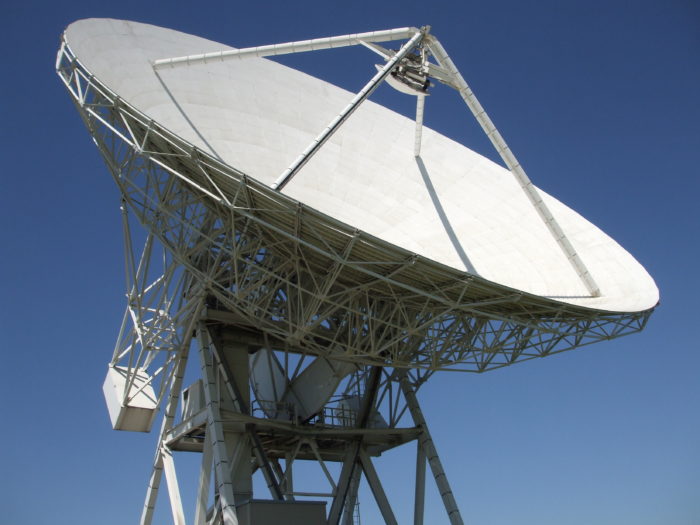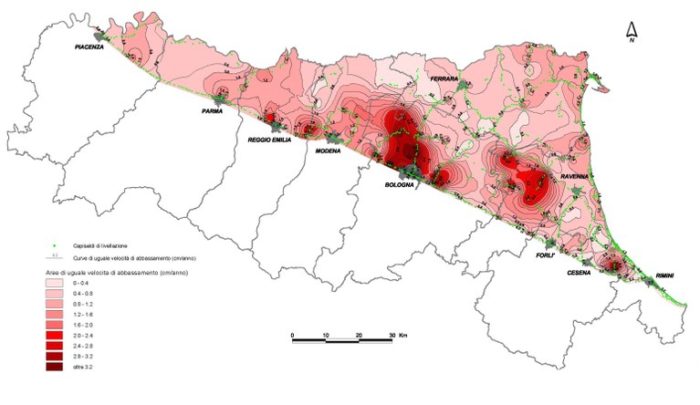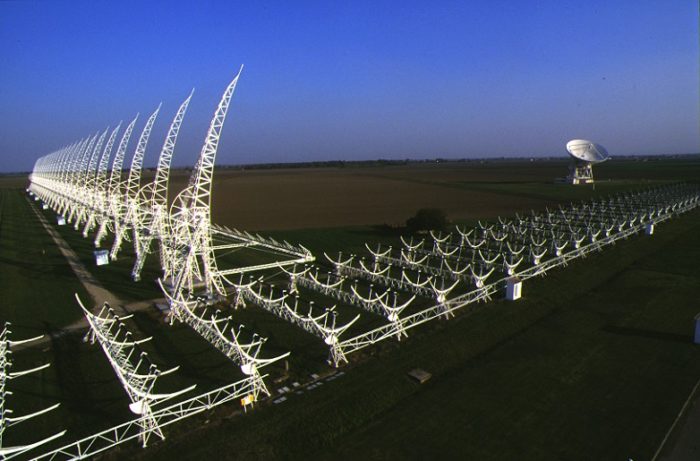Being part of the Network opens new opportunities for Emilia-Romagna, an Italian region (Full NEREUS member).
Mr Ruben Sacerdoti, Director of the Regional Department for Business Internationalisation and FDI Attraction (Directorate-General Knowledge Economy, Labour, and Business at the Emilia-Romagna Regional Government) shares with us more information about Emilia-Romagna’s activities and why the organization joined NEREUS in the following short interview!
• Emilia-Romagna is one of the leading regions in Europe with a highly specialised industrial system. Could you provide me with a short description of your region’s priorities and strengths (you may want to focus also on your recent activities)? (etc. big data – digital innovation)
Emilia-Romagna is a leading Italian region in terms of economic development and industrial competitiveness in Southern Europe and it is strongly oriented to invest in research, innovation and sustainability.
Some of its industrial clusters, like automotive, robotics and engineering, medical equipment, food, and ceramics embrace the new technology challenges and thus hold a leading position in the world market.
The Region is also the seat of historical Universities, firstly the University of Bologna, and of some of the main Italian Research Institutions: CNR (National Research Council), ENEA (National Innovation Agency for Energy and Environment), INGV (National Institute of Geophysics and Volcanology), INFN (National Institute of Nuclear Physics), INAF (National Institute of Astrophysics).
In the last years the Region has been strongly committed to the realization of a new large research infrastructure dedicated to Big Data and Artificial Intelligence. This infrastructure – “the Big Data Technopole” – will also host the computing center of the ECMWF (European Center for Medium-term Weather Forecasts), and one of the three pre-Exascale Supercomputers recently approved by the European Commission.
In the last years, Emilia-Romagna concentrated its policy efforts on the creation of a strong and dynamic innovation ecosystem based on a network of industrial research labs aimed at supporting the main regional industrial clusters and the public administration in their challenges for the future.
The regional Smart Specialization Strategy combines the need for competitiveness with the main crucial commitments for the future, like sustainability, digital transformation and human development.
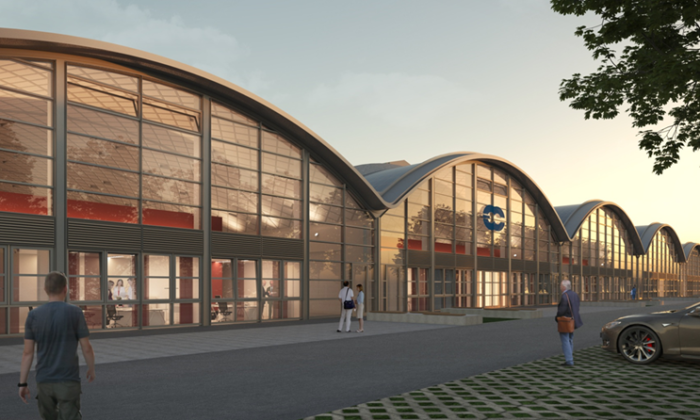
Rendering of the bologna Technophole that will host the data centre of the European centre for medium-range weather forecast (ECMWF).
• Space technology, data and services have become a catalyst for the growth of the EU economy and society. Could you share with us a few words about how the use of space technologies can respond to the territorial challenges of your region and in which respect (can you share with us a few examples)?
The Regional Government is committed to supporting both the rise of innovative sectors in the local industry and the expansion of high-level research institutions.
Concerning the industrial sector, the aim is to reinforce the enterprises specialised in the aviation sector (civil, commercial and military, ground field services), space vehicles, satellites: 150 regional companies, 4.500 employees, corresponding to 1% of regional GNP. The impact of innovation in this sector can spread over other sectors of the regional economy like new materials, engineering, automotive.
At the same time, we are also investing in the support of the local network of research centres and institutions directly involved in space research, such as:
- INAF – National Institute for Astrophysics;
- The “Northern Cross” Radio Telescope in Medicina (BO) – one of the world’s biggest transit radio telescopes;
- SKA – SQUARE KILOMETRE ARRAY – an international program for new generation radio telescope that will be based in 3,000-kilometer wide areas located in Australia and South Africa;
- CTA – Cherenkov Telescope Array – the international project finalised to design and build the largest ground-based gamma-ray detection observatories in the world (in Canary Islands and Chile);
- Interdepartmental centre for Industrial Research on aerospace of the University of Bologna (CIRI aerospace);
- Ciclope – a research laboratory for fluid dynamics study, which allows the worldwide best space and time-resolved measurements in turbulent pipe flows.
Since space economy and research programs offer highly sophisticate instruments for planning and managing complex processes linked to climate change, industrial transformation and new social needs, we expect an important impact of NEREUS’ activities in the management of the territory of the Emilia-Romagna Region, which is of great complexity from various points of view: hydrogeological, environmental, agricultural, urban and logistic.
• Can you provide examples where your public administration uses space-based information or services?
Region Emilia-Romagna through its technical agencies currently uses data and services in these fields:
- Climate change (meteorology and climatology, seasonal predictions of water resources, hydrogeologic risks, forecast of heat waves, air quality scenario analysis);
- Agriculture (precision irrigation forecast, modeling of soils and crops);
- Production and innovation;
- Sustainable cities (soil consumption, asbestos concrete sheeting identification, and mapping);
- cultural heritage;
- Security and Cybersecurity.
• How did you come across NEREUS and what motivated you to join our Network?
We were informed of NEREUS’ activities and partnership by our Delegation in Bruxelles and by different research centres located in Emilia-Romagna.
We look forward to building partnerships with NEREUS’ members and partners and engage in interregional collaboration to better exploit space-based data and services and transform them into information and knowledge relevant for Emilia-Romagna’s industrial and territorial policies.
• What are your expectations?
Space applications help in finding good solutions to regional challenges like climate change, the sustainability of the agricultural sector, digitalisation and innovation, protection of cultural heritage, territorial planning and cohesion. Nereus is therefore an ideal platform to gain more insights into the opportunities related to space.
Emilia-Romagna is ready to share experiences and best practices about the development of new solutions that can serve as a stimulus for other regions in Europe and in the world. The research ecosystem of the region, in human and technological terms, may also find new opportunities for collaboration and offer knowledge and experience to other NEREUS-regions.
• What do you value with respect to interregional collaboration? What is your experience?
At the Italian level, the Region is involved directly or supporting local research centres or companies in the following programs coordinated by the Italian Ministry of Economic Development – MISE:
- Multi-regional Programme “Mirror GovSatCom” – satellite communications system – financial share (€500.000)
- Multi-regional Programme “Mirror Copernicus” (Earth Observation) – financial share (€1.000.000)
- Multi-regional Programme “I-Cios” – space exploration and related technologies – financial share (€500.000)
- Leonardo Group Investment Programme
At the European level, Emilia-Romagna participates in many projects (Territorial Cooperation programmes, Horizon 2020, LIFE, etc.) and supports and encourages companies and research centres to engage in international programmes and networks. In this, the Regional Agency for research and innovation ART-ER plays an active role.
Here you can find more details: https://progeu.regione.emilia-romagna.it/it
• How do you plan to make use of our website and other communication tools (eg. Twitter, newsflash) and for which purposes (goals)?
Websites, social media and other tools are currently used to inform about activities at the local and international levels and to disseminate results and opportunities. Alongside with those managed directly by the Region, we can rely on the tools used by the regional Agency ART-ER, strongly focused on a selected and specific target of users (companies, researchers).

